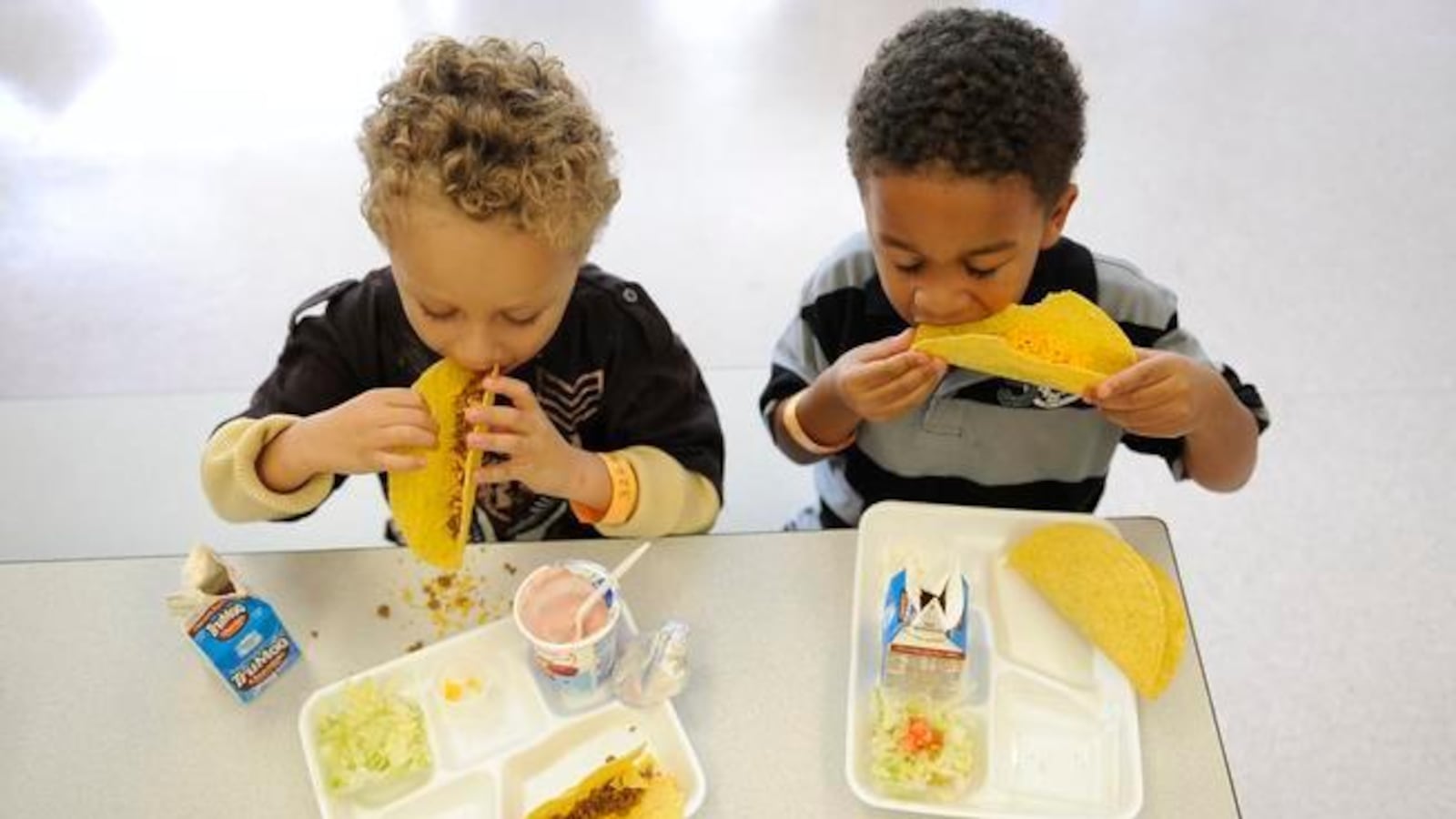When schools Chancellor Carmen Fariña announced the day before school started last week that New York City would no longer charge any student for school lunch, principals across the city celebrated the change.
Now, to their relief, they wouldn’t have to pester families who often wound up owing them for unpaid meals or worry that some students were skipping out on lunch because they were ashamed about qualifying for free meals. But, to make the most of the program, they would have to spread the word to families and encourage students to take advantage of it — so some immediately began drafting letters to families and preparing to make lunchroom announcements.
But even as schools rushed to carry out the new policy, which made an additional 200,000 students eligible for free lunch, city officials didn’t expect a sudden spike in students eating school lunches. And even advocates say it will require sustained outreach to convince middle-class and low-income students alike to take the free meals.
“This is a policy that for decades had separated children by income,” said Liz Accles, executive director of Community Food Advocates. “It’s going to take some time to undo that.”
Even though most principals welcomed the new policy, some said it was unlikely to create a big change at schools where most students already received free lunch.
Urban Assembly Bronx Academy of Letters Principal Brandon Cardet-Hernandez said many of his students reacted with indifference when they were told about the new policy. He suspects that’s because — as in many city schools where most of the students come from low-income families — the vast majority of students were already eligible for subsidized meals.
“It’s great,” he said, “but the reality is a huge portion of our kids are already getting free lunch.”
For years, advocates have pushed Mayor Bill de Blasio to make lunch free for all students. Until now, families have had to earn at or below 185 percent of the federal poverty line, or $45,510 for a family of four, to qualify for subsidized lunch. While 75 percent of the city’s students qualified under that old standard, some families who earned more still couldn’t easily afford the $1.75 lunch — and students often felt stigmatized for claiming a free meal.
The city had been moving incrementally toward free lunch, making it universal at standalone middle schools in 2014, which resulted in a 6 percent increase in those students eating school lunch, officials said. Now that lunch is free citywide, an education department spokesman projected the new lunch policy would result in 29,000 additional students getting lunch each day — a 3.4 percent increase.
That relatively modest bump is far lower than what some advocates have predicted. Community Food Advocates had anticipated an additional 120,000 lunches per day, and the organization’s executive director, Liz Accles, stressed the city should work to aggressively to make sure parents know it’s free and convince students to participate.
“The policy change is most important, but what’s the messaging to students and families?” Accles said. “I think there should be a bigger jump than 3 percent if there’s a real effort to publicize.”
City officials noted Fariña sent a letter home announcing the change, notices have appeared on school websites, and some principals have been sending reminders of their own.
At Metropolitan Expeditionary Learning School in Queens, principal Damon McCord said he appreciated the new policy even though his school has not struggled with any stigma associated with free lunch.
A relatively even mix of students at MELS qualify for free or reduced-price lunch, but because students pay for lunch using a barcode on the back of their student ID cards (a common practice at city schools) it’s difficult for students to tell which of their classmates cannot afford lunch.
“That system had gone a long way to help take some of the anxiety out of the lunch lines,” McCord said.
Still, McCord and other principals expressed some concern that the new program could make it more difficult to qualify for federal Title I funding that flows to schools with higher shares of students who qualify for subsidized lunch.
McCord sent an email to families Monday stressing that even though lunch will be free for all students, families should still fill out the old income forms to help the school collect additional federal funding.
Last year, the proportion of families who qualified was about five percentage points short of the 60 percent threshold required for schools to receive extra Title I money, he said. McCord said he is unsure if the free lunch program will make it more difficult to persuade parents to submit the form.
But, in a sign of how federal funding can provide a major boost to school budgets, he noted two to three school staffers would spend the next month making sure families filled out the forms. (City officials said moving to universal free lunch in middle schools created few paperwork problems.)
“There’s a lot that a school can do with that money,” McCord said. “It’s a feast-or-famine system that’s in dire need of reform.”
Across the city at the Academy of Arts and Letters, a K-8 school in Fort Greene, Brooklyn that wasn’t included in the middle school free lunch program, principal John O’Reilly said he’s thrilled about the new program.
Because students are allowed to roam between lunch and recess, there is less scrutiny of who is eating school lunches and who isn’t, even though about a third of students are eligible for free or reduced price lunches, O’Reilly said.
As the city has worked to make school lunches more nutritious by adding salad bars and using more locally-sourced ingredients, it appears to be having an added benefit of attracting a wider range of students to the lunch line, lessening the stigma attached to school meals.
“When the lunch is better, it’s harder to know who’s qualified for free lunch and who isn’t,” O’Reilly said. “They want really good food.”

